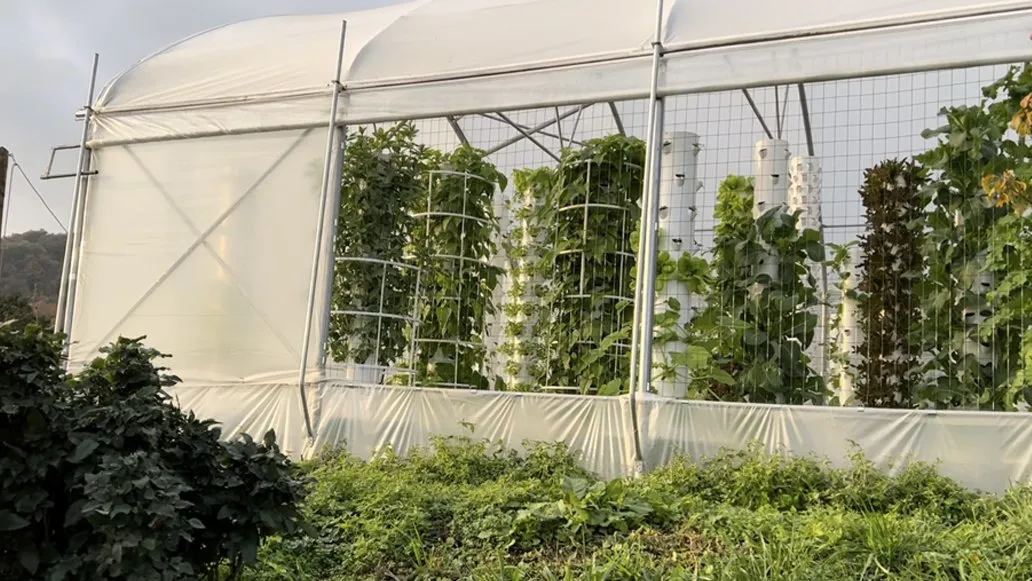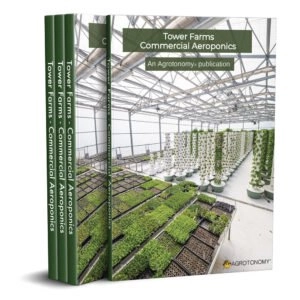When setting up a hybrid greenhouse, although Agrotonomy uses a professional greenhouse manufacturer, in many cases, such structures are built by local contractors since they do not involve complicated technical ramifications compared to a fully climate-controlled greenhouse.
Most hybrid greenhouses are straightforward A-frame or arched structures built with non-corrosive galvanized metal bars and poles.


The sides are wrapped with anti-thrip micro-netting, preventing pests from entering the greenhouse. This micro-netting is also instrumental in keeping beneficial insects such as ladybugs or bumblebees within the premises.
However, this netting limits airflow. To mitigate this, circulation fans must be installed to increase airflow, aiding in providing a continuous flow beneficial for temperature regulation, humidity control, and the even distribution of carbon dioxide.
The sides of the hybrid greenhouse can also be used to stretch a windbreaker mesh (agricultural grade) to protect the aeroponic tower system during stormy conditions. It is a highly effective, low-cost solution to circumvent the problem of high winds.
To reduce summer heat, a shading cloth featuring 25% to 35% filtration is placed on top of the polyethylene roof (some hybrid greenhouses are equipped with a retractable shading cloth), reducing the temperature by 5 to 15°C, thus protecting plants from heat stress caused by direct summer sunlight.
A hybrid greenhouse usually costs 80% less than a fully climate-controlled greenhouse.








